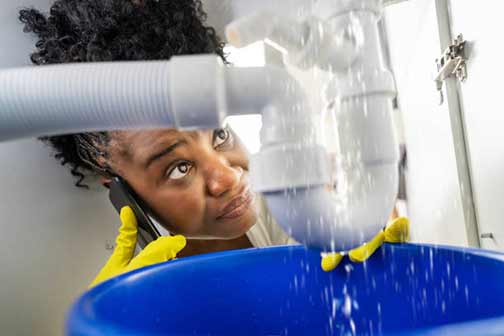
The best plumbing problem to have in your home is the one that never happened. However, Tide Management says, given that plumbing problems always seem to happen in your home and give no prior warning, how can you stop plumbing problems in your home?
The truth is, most plumbing problems give warning before they happen. The fact is, maybe you did not see the warning signs, or you saw them but did not pay attention, either because you misunderstood the signs or underestimated their importance.
To stop plumbing problems from happening in your home, identify the signs of impending issues in your plumbing system. The question is, how do you do this? Annual plumbing checks are the trusted method to stay ahead of problems in your home’s plumbing.
Annual plumbing checks: How to do them and what to know about them
For your annual plumbing checks to be effective, they must have the following characteristics:
Must be comprehensive
Every component of the plumbing must be captured in the test. This means you need a complete list of the different sections of your plumbing to conduct a proper check of the system.
Must be systematic
It cannot be haphazard. It must follow an orderly pattern. This ensures that nothing in the list is accidentally skipped over. It also means that when inspecting any part of the plumbing, the process must be detailed and methodical.
Must be professional
To be inspected thoroughly, some plumbing features require specific methodologies, tools, and equipment. If these requirements are not met, problems in those parts of the system may go undetected.
Here is a rundown of the checks that should be done in every section of your plumbing:
In the bathroom
- Faucets: When operating the faucets, check for weak pressure and irregular spray patterns. Also, check your faucets and water supply lines for signs of leaks.
- Drains: Shower and toilet drains are where most drainage issues in the house happen. Clear the lines using the appropriate plumbing tools or home remedies.
- Toilets: Toilets have movable parts that can wear out and cause the toilet to run or leak. Ensure the toilet seat is not wobbly and the base is properly sealed.
- Caulking: If caulk seals fail, water from the bathtub or shower will seep into the walls and flooring, resulting in massive water damage to your home.
In the kitchen
- Sink and sink drains: Sink strainers are a common site where leaks happen. Problems can also occur in the P-trap. Check the strainer basket for leaks and corrosion.
- Faucet: Like in the bathroom, the primary issues you want to look out for are leaks, clogs, and low water pressure. Faucets also need cleaning.
- Shutoff valves: These control the flow of water to various fixtures. Test to ensure the water is completely shut off when the valve is closed.
- Garbage disposal: Look for signs of leakage, clogging, and corrosion. Pay attention to where the unit connects to the dishwasher and sink drain. Also, check for bad odors.
- Dishwasher: Listen to the dishwasher while it works. If it fills slowly or is slow to drain, check the supply hose, shutoff valve, and discharge hose.
- Refrigerator: If the refrigerator has a water dispenser and an icemaker, have the filters replaced and check the water hoses for wear and leakage.
In the septic and sewer system
- Inspect your septic system: Inspect the septic tank and drain field. Have the septic tank pumped out if the solids inside it are at the recommended depth.
- Clean your sewer main: Check the effectiveness of your sewer line by running all your faucets and showers at once. Have your sewer line professionally hydro jetted to clear out the debris.
- Inspect vent pipes: Vent pipes are central to the sewer line’s function. They equalize air pressure inside the lines. Check them for blockages.
In the yard, basement, etc.
- Washing machine: Check the hoses for signs of wear or leakage. Check the hot and cold water valves. If the water supply doesn’t stop when you close the valves, replace them.
- Water heater: Check the cold water inlet pipe and hot water exit pipe for leaks. Check the base of the tank for signs of leakage. Flush the tank.
- Sump pump: Test the sump pump by pouring water into the basin to see if the motor will power up, empty the pit, and turn itself off afterward.
- Outdoor hose spigots: Outdoor faucets may be old, broken, or leaky. Outdoor hoses may have cracks due to exposure to cold weather.
- Irrigation system: The sprinkler system is prone to leaks and should be drained and winterized at the start of winter. Check the system for ruptured pipes.
- Check your home’s water pressure: Test with a pressure gauge. If the water pressure is too high or too low, investigate further to find the cause of the problem.
Lastly, to get the full benefit of a plumbing checkup, you should let a professional handle it. A professional plumber will not only find the problems in your plumbing, but they will also fix those issues.

